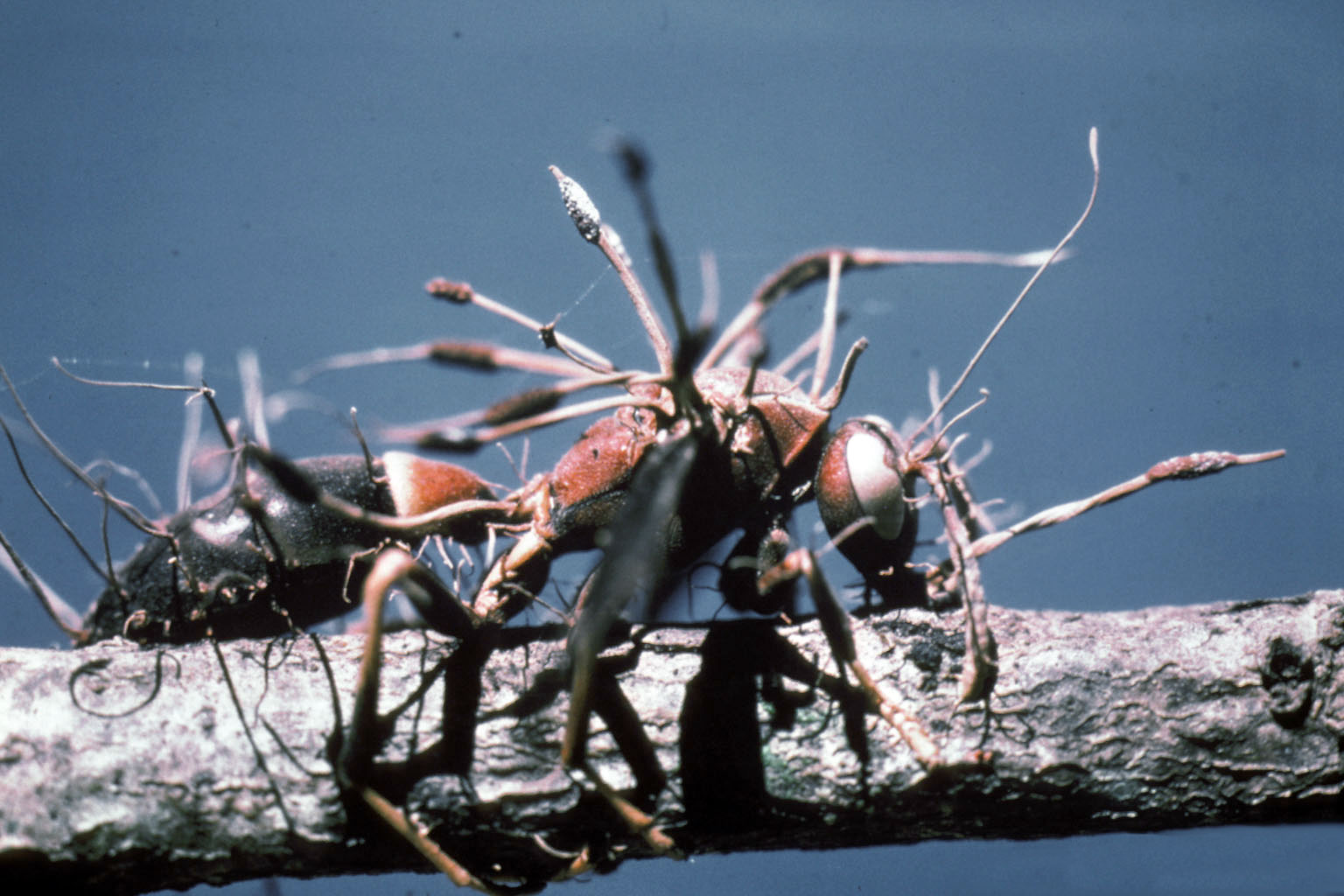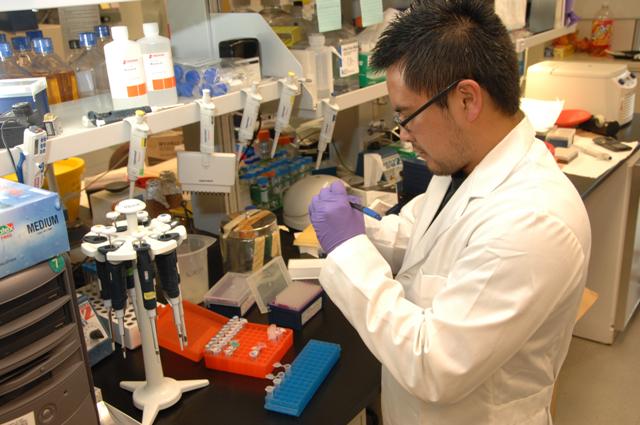.jpg/800px-Parasite_of_a_parasite_(15965777418).jpg)
The course Parasitology studies the parasites and their effects, for their scientific, ecological interest and in human and animal health. It is a science of sanitary, economic, and scientific importance since the parasites cause millions of deaths and diseases, enormous losses in livestock and crops, and their study teaches us to know better the living beings and ecosystems.
The first unit is about the parasites and the science of Parasitology, the second of protozoan parasites, third of helminths or parasitic worms, the fourth of parasitic arthropods and the fifth of two special cases of parasitism: parasitic plants and the brood parasite, which occurs in birds.
The course is completed with five lab experiments in which you learn to recognize protozoa, helminths and parasitic arthropods, and learn the techniques of treatment of feces and blood, hematological techniques and coprological techniques.
HOW TO FOLLOW THE COURSE
The course have five units. The first is an introduction to the world of Parasitology, the second is about protozoan parasites, third of parasitic worms or helminths, fourth of parasitic arthropods and fifth of parasitic plants and the brood parasite.
The tips for studying the various topics are as follows:
1. Read the summary as an introduction to the unit to be discussed
2. Read carefully the readings proposed in the corresponding links
3. Watch the videos to set the ideas and delve into the topics. However, these will not be subject to examination
4. Read the following diagrams and try to answer the questions that arise
5. Perform lab experiments, if not physically possible, in a virtual way
6. Expand, to the extent possible, Internet searches and / or written bibliography at the end of this guide
7. Go a lot further! At the end of this didactic guide we tell you
SCHEMES AND SYLLABUS
1. The Science of Parasitology
This Introductory Unit is about the science of Parasitology, the parasites and the Parasitolog Lab.
Important items to learn:
- Object of study of Parasitology
- Parasitism and types of parasites
- Origin of parasites
- Main groups of parasites
2. Parasitic Protozoology
This unit is about protozoan parasites.
Important items to learn:
- General Characteristics and Classification of Protozoa
- Main groups and species of species of protozoan parasites: parasitic amoebas, Entamoeba histolytica, free-living amoebozoa infection; intestinal Flagellates; Giardia duodenalis; trichomonanida; Trichomonas vaginalis; leishmania; Trypanosoma; apicomplexa: general characters and classification; Cryptosporidium; Cyclospora, Cystoisospora, Sarcocystis and Toxoplasma; Plasmodium and Babesia.
3. Parasitic Helminthology
This unit is about parasitic helminths.
Important items to learn:
- General Characteristics and Classification of flatworms
- Main groups and species of flatworm parasites: Clonorchis; Opisthorchis and Paragonimus; Fasciola; other trematodes; Schistosoma; Pseudophyllidea: Diphyllobothrium; Cyclophyllidea; Taenia; Echinococcus; other cyclophyllidea
- General Characteristics and Classification of nematodes
- Main groups and species of nematodes parasites: trichuridae; Trichinella; Strongyloides stercoralis; Ancylostoma duodenale and Necator americanus; Ascaris lumbricoides; Toxocara; Anisakis; other ascarididae; Enterobius vermicularis; Wuchereria bancrofti, Brugia and Loa; Onchocerca volvulus; Dracunculus medinensis; other filarioidea.
- Acanthocephala, Macracanthorhynchus hirudinaceus
- Annelids leeches, Hirudo medicinalis; pentastomida; Linguatula serrata
4. Parasitic Arthropodology
This unit is about parasitic arthropods.
Important items to learn:
- General Characteristics, Classification and Health importance of arthropods
- Main groups and species of arthropods parasites: Acari; Sarcoptes scabiei; Ixodidae; Insects; Anoplura; Pediculus humanus and Pthirus pubis; Hemiptera; Cimex lectularius; Triatoma; Siphonaptera; Diptera; Tabanidae; Muscidae; Stomoxys calcitrans; Glossina; Calliphoridae; Sarcophagidae; Sarcophaga carnaria; Wohlfahrtia magnifica; Culicidae.
5. Parasitic plants. Kleptoparasitism and Brood Parasitism
Parasitic plants. Santalales. Rafflesiaceae. Fungi. Cordyceps. Kleptoparasitism. Brood Parasite.
BIBLIOGRAPHY
- Association of Zoo Veterinarians Technicians. Parasitology Bibliography
- FAO. Bibliography of Veterinary Parasitology
- Manter Laboratory of Parasitology. Bibliography of Parasites and Vertebrate Hosts in Arizona, New Mexcino and Texas (1893-1984)
- Penn. Veterinary Medicine. Introduction to the Parasitology Laboratory
- Practical Science. Parasitology
- Robyn Y. Shimizu. Parasitology
- The Online Books Page. Parasitology
- World Health Organization. Basic laboratory methods in medical parasitology (pdf)
HOW TO GET THE CERTIFICATE OF COMPLETION
To obtain the Certificate of Completion, and if you wish the digital badge, of the Parasitology course you must pass the test exam with 60 questions with four alternative answers on the subjects that appear in the course program. About 15% of the issues will be related to virtual laboratory experiments. The test is passed with at least 80% of correct answers. The exam has a time limit of 60 minutes and can be repeated as many times as desired.
This is the web adress of the general post of the course, that includes the web address of the examination online to be able to obtain the certificate of completion.
WHEN YOU GET THE CERTIFICATE OF COMPLETION...
Don't stop! Because it is when the Parasitology course begins. Read, learn, debate, comment, do courses, search the Internet and libraries, research and never stop learning. Remember that in today's world it changes so fast that it requires retraining and updating of knowledge.
Complete your certificate
If you wish, on the back of the diploma you can print the syllabus of course, downloading this doc file, Word.
Spanish version of this page
Parasitology






_Lorryia_formosa_2_edit.jpg/800px-Yellow_mite_(Tydeidae)_Lorryia_formosa_2_edit.jpg)







